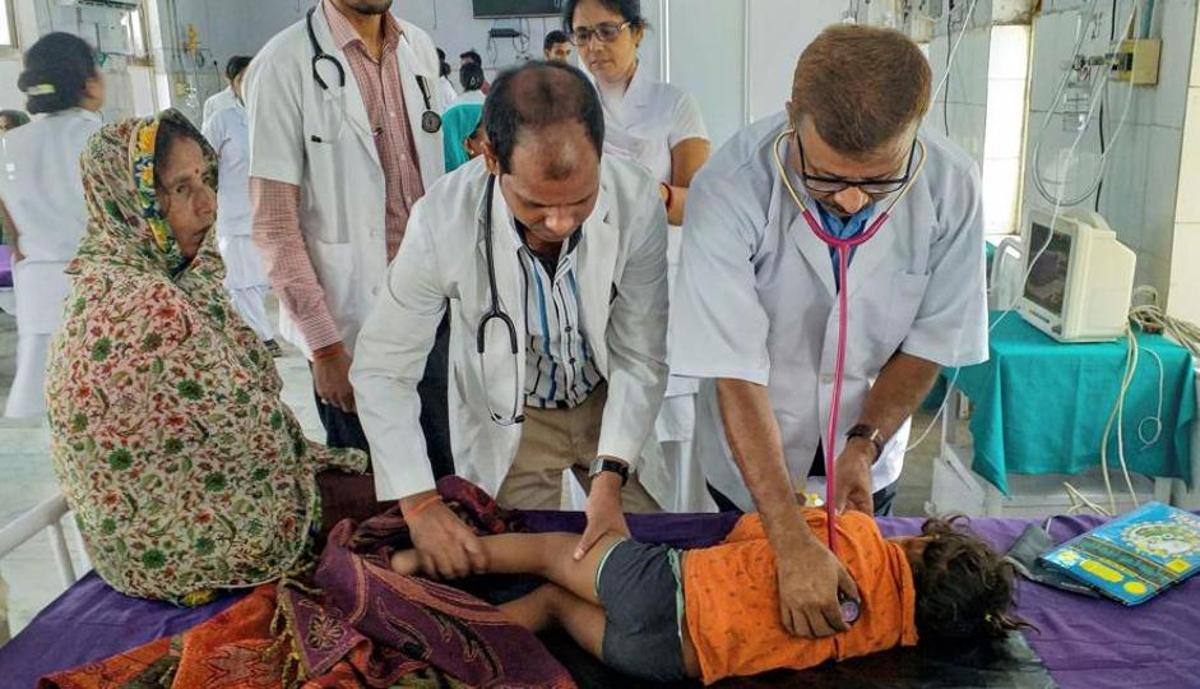“Kitna wicket gya,” asked the Bihar State health minister Mangal Pandey in between the meeting with Union health minister and Minister of state at the Sri Krishna Medical College and Hospital (SKMCH). SKMCH is the same hospital where 101 kids have died suffering from AES in the last 15days.
Mr. Panday, who visited the hospital after 13 days of the tragedy, was interested in a cricket match. I wonder how someone did not reply to him, “Sir, 92, that is the number of kids died in the same building you are asking the wickets.” Minister Panday later tweeted about India’s victory from his official Twitter account.
On the same day during a Press Conference with Union Health Minister Dr. Harsh Vardhan, newly appointed Minister of State for Health and family welfare Ashwani Kumar Choubey was caught sleeping. Earlier we used the term the government is sleeping while mothers are crying for their dead kids, thanks to Mr. Choubey, we literally, saw how government sleeps!
Mr. Choubey was also spotted celebrating Bharatiya Janata Party’s victory in Bhagalpur a day before. He later told reporters, “I was not sleeping; I was pensive.”
It has been 17 days of the epidemic, and none of the opposition leaders in Bihar was heard talking about the tragedy, or even asked questions from the governing party. Well, that is too much to expect I guess, they did not even visit the hospital once not for their photo opportunity. Is the opposition dead in Bihar? If yes, why are they still living in the bungalows paid by our taxes? Move in the car that we pump the fuel for?
Remember, how Bihar had hot seats in the recent election from Begusari to Patna Saheb. Look the state now.
The Bihar state government, who was sleeping for good 14 days, woke up on Saturday with a visit of Mr. Pandey. This was when the death toll had reached 70. A day after Union Health Minister reached the SKMCH with the Minister of State for health and family welfare. If this is what you call efficiency, Bihar will develop in another century!
Thanks to local media, we got to know what is happening in the state else the national media had cricket to cover. While we are criticizing the media, it is essential to thank TV9 Bharatvarsh’s Ajit Anjum who went to ground zero and made the nation see how kids die in the scarcity of doctors and resources in north Bihar’s most significant state hospital.
What we ask today is why should not on moral grounds, the Minister of State Mr. Choubey for sleeping, and State Health Minister Mr. Pandey should offer their organization as soon as the crisis is over. I respect his love for the game, and the state is pretty sure he will go great as state sports minister, but we need someone who can save our children as the health minister.
We also ask, why shouldn’t the opposition parties and their leaders should leave politics as their crippleness in voicing the issues of people are causing much damage to the state.
As per the reports on Monday AES has claimed 101 lives in Muzaffarpur.

















